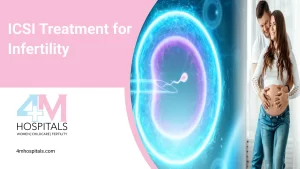In the realm of assisted reproductive technology, In Vitro Fertilization (IVF) stands as a beacon of hope for couples struggling to conceive naturally. The procedure of IVF pregnancy has revolutionized the way we approach fertility challenges, offering a glimmer of possibility for those yearning to become parents. In this comprehensive blog post, we’ll delve into the intricate process of IVF, shedding light on the steps involved, its effectiveness, and the journey it offers to those seeking to use IVF to get pregnant.
The Procedure of IVF Pregnancy
In vitro fertilization (IVF) is a complex process that involves several steps. Here is an overview of the typical procedure for an IVF pregnancy:
Section 1: Initial Consultation and Evaluation
The procedure of IVF pregnancy typically begins with an initial consultation and thorough evaluation. During this phase, couples or individuals meet with fertility specialists to discuss their medical history, lifestyle factors, and specific fertility challenges. A series of tests are conducted to assess the potential causes of infertility and determine the most appropriate treatment plan.
The comprehensive evaluation may include blood tests to assess hormone levels, imaging studies to examine the reproductive organs, and semen analysis for male partners. This crucial first step ensures that IVF is the right path to pregnancy for the patient.

Section 2: Ovulation Induction and Egg Retrieval
Once the decision is made to proceed with IVF, the next step involves ovarian stimulation and egg retrieval. Ovulation induction is a critical component of the procedure of IVF pregnancy. Fertility medications are prescribed to stimulate the ovaries, encouraging the development of multiple follicles, each containing an egg.
Monitoring is essential during this phase to track the growth and maturation of the eggs. When the eggs are deemed ready for retrieval, a minor surgical procedure is performed to collect them. This is typically done using a thin needle guided by ultrasound imaging.
Section 3: Fertilization and Embryo Culture
After the eggs are retrieved, they are combined with sperm in the laboratory to facilitate fertilization. This can be achieved through traditional insemination or Intracytoplasmic Sperm Injection (ICSI), where a single sperm is directly injected into an egg. The embryos are then cultured in a controlled environment to facilitate their development.
The quality and progression of the embryos are closely monitored by embryologists. Typically, embryos are cultured for a period of five to six days, during which time they should reach the blastocyst stage – a critical milestone for successful implantation.
Section 4: Embryo Transfer and Pregnancy Testing
The final step in the procedure of IVF pregnancy involves the transfer of one or more healthy embryos into the woman’s uterus. This is a relatively quick and painless procedure that doesn’t require anesthesia. The number of embryos transferred is a decision made in consultation with the fertility specialist, considering factors like the patient’s age and overall health.
Following the embryo transfer, a waiting period ensues, typically lasting 10-14 days. This is when a pregnancy test is conducted to determine if the IVF procedure was successful. A positive test result signifies the initiation of a promising journey to parenthood, marking the culmination of the IVF process.
IVF to Get Pregnant: A Journey of Hope and Possibility
In the procedure of IVF pregnancy, hope and possibility intertwine to offer a path to parenthood for those facing infertility challenges. The IVF journey can be challenging, emotionally and physically, but it has transformed the lives of countless individuals and couples around the world. Through its meticulously crafted steps, IVF extends a lifeline to dreams of starting or expanding a family.
Conclusion
In conclusion, the procedure of IVF pregnancy is a remarkable journey that encompasses initial consultations, ovarian stimulation, egg retrieval, fertilization, embryo culture, and the ultimate transfer of healthy embryos. It is a beacon of hope for those who wish to utilize IVF to get pregnant, offering a pathway to parenthood that has fulfilled the dreams of countless families.
If you have experienced IVF or have questions about the procedure, we invite you to share your thoughts and experiences in the comments section below. Your insights and stories can provide support and guidance to others on their own IVF journey.





